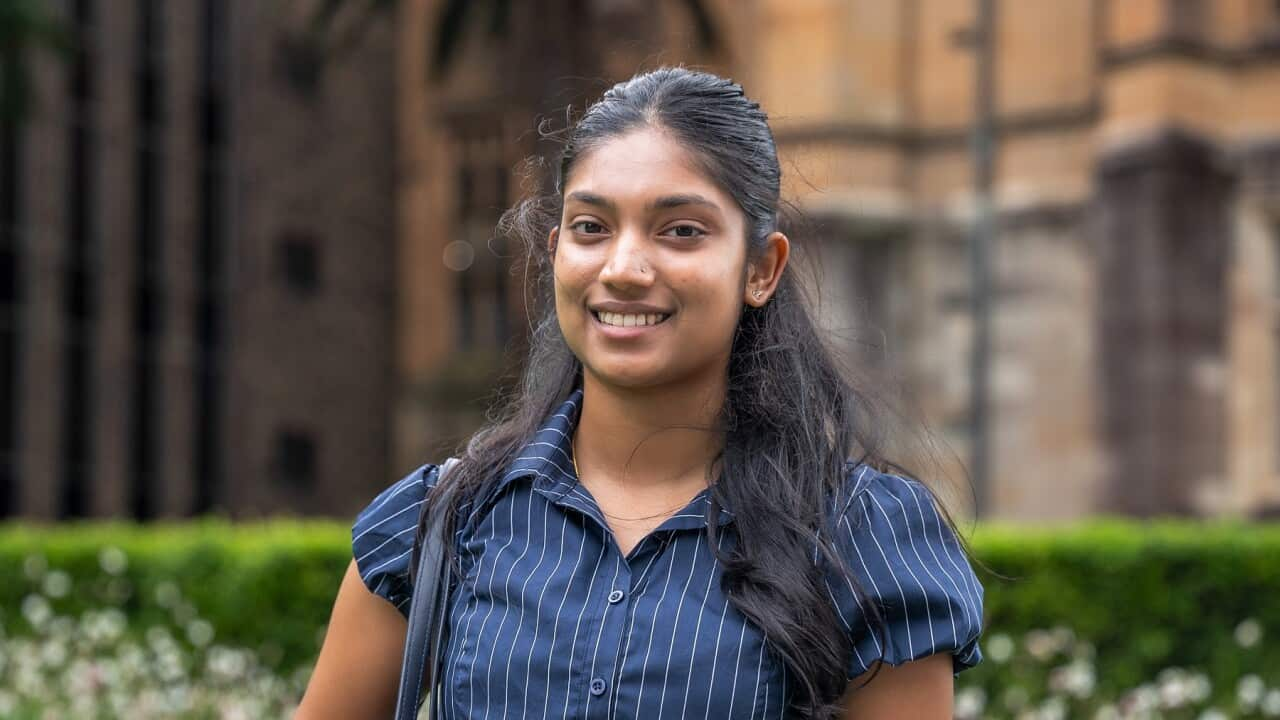TRANSCRIPT
Anandikaa Ramesh is a migrant from Sri Lanka, who is studying twin degrees at the University of Sydney. As a woman, her choice of software engineering and commerce is unusual.
“In my programming tutorials in class, usually women are the minority. So, in around 20 people, only four would be women like girls.”
It’s something Anandikaa is used to. For her final school exams, she was among a small group of girls studying higher level maths at Penrith Selective High School in Sydney’s west.
“I was really passionate and good at maths essentially, and I really liked problem solving and I just found that I was a logical thinker. In terms of software engineering, I found that it was very logical and algorithm based, which I really enjoyed particularly. And I just had a passion for commerce, so I thought it was best to combine both of them”.
And that places Anandikaa among just 37 per cent of women enrolled in university STEM courses nationwide. She hopes to inspire others.
“I'd really love to be a role model for all those women and just people in minority backgrounds and immigrant backgrounds, which is predominantly where I'm from, Western Sydney.”
It’s a view shared by Sydney University’s Associate Vice President Shane Griffin, who’s spent almost two years developing a new school-to-university STEM pipeline, targeting young women.
“There's no other program that's supporting students through their high school years, both in outreach and financially and then into university as well. So, it is a long-term project to make a substantial difference to a serious number of people. We're looking at putting out an additional sort of 300 plus graduates out into the workforce. We're just getting started, but it's a really exciting project for us.”
It’s all thanks to a $100-million dollar donation from tech founder Robin Khuda, who recently sold his data centre business, as Shane Griffin explains:
“Robin is an international student himself from Bangladesh. Robin has seen a lack of diversity in his company and found it difficult to find female engineers and scientists.Employers everywhere have said for a long time there aren't enough women completing STEM degrees. So, to be able to support that and to widen that pool is really fantastic”
Shane Griffin says the donation is one of the most significant targeting women in STEM worldwide.
“This is the largest donation the university's ever received and as far as we are aware, the largest donation supporting women in STEM and focused on students and local students and their outcomes. So, the university's incredibly grateful.”
The multi-decade project is due to begin outreach from July this year, eventually reaching 40,000 high school students.
The first pilot scholars are expected to enrol at Sydney University in 2027.
It’s a move welcomed by Sally-Ann Williams, CEO of Cicada innovations and chair of the federal government’s recent Pathway to Diversity in STEM review.
“I absolutely commend Robin Khuda and the University of Sydney for taking a very intentional approach to thinking about how they are going to work on changing the ratio of the number of women in engineering and computing and in STEM degrees. And it's very pleasing because that was one of the key recommendations in our review.”
However, Sally-Ann Williams says more work is needed to boost diversity across government and private sectors.
“There's still a really large gap in some of the STEM fields in Australia for participation of women and other underrepresented people, and that is primarily in the areas of engineering and largely in computing as well. It's actually critical that we're more diverse in the STEM sector - diversity of thought and lived experience, which includes backgrounds such as gender and socioeconomics, regional versus rural versus city. Research shows that diverse teams do create better outcomes and higher success metrics for companies and for government by the way, in policy. And it's because all points of view are considered.”
For Anandikaa Ramesh, who expects to finish her engineering and commerce degrees in 2028, the goal is a career in financial technology. She hopes more women will soon join her.
“A lot of women are unaware of what engineering is and what engineers do. So, that's essentially why they're not entering these fields. So, I think if see if young girls see more women in these STEM-based jobs, they'll be more encouraged to apply.”













